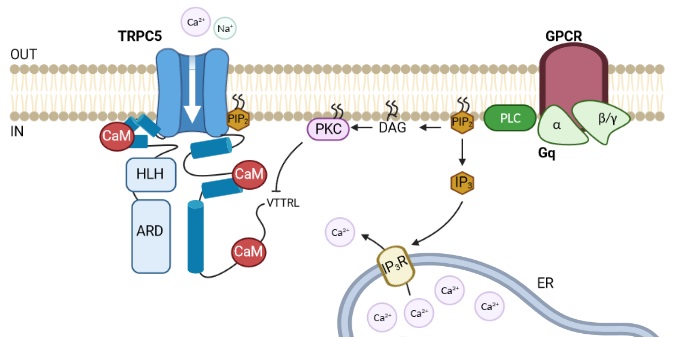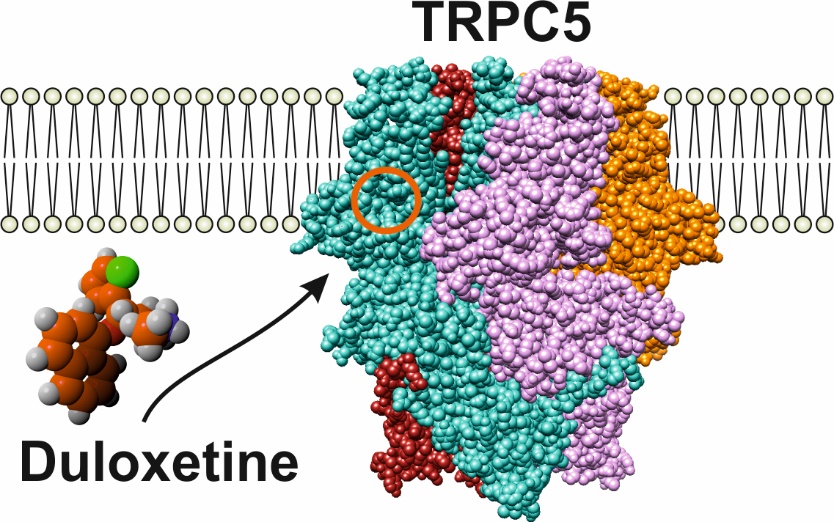Molecular mechanisms of TRPC5 ion channel activation and regulation
The human transient receptor potential canonical 5 (TRPC5) is a polymodal, calcium-permeable, non-selective cation channel mainly activated by G-proteins and their downstream signal transduction pathways, but also by noxious cold temperatures. It is expressed in the central and peripheral nervous system and in other tissues such as kidney, synovium and odontoblasts. It has recently been shown that pharmacological and genetic inhibition of TRPC5 leads to relief of neuropathic and inflammatory pain, making TRPC5 an attractive target for pain management strategies.

Despite great advances in medicine, treatment options for pain states associated with diabetes or chemotherapy-induced neuropathy are still limited. These types of neuropathies are accompanied by cold-induced pain that is very difficult to manage in clinical practice. In fact, the only drug that has successfully undergone clinical trials and demonstrated efficacy for this type of pain so far is duloxetine. This drug is superior to other antidepressants with a similar mechanism of action at managing painful neuropathies, but the reason for that is unknown. Interestingly, it has recently been shown that the cold-sensitive TRPC5 ion channel is expressed in human sensory neurons and that inhibition of its activity relieves persistent pain, including neuropathic cold pain.

We hypothesised that the TRPC5 channel is modulated by duloxetine and may contribute to its analgesic effect. Our electrophysiological measurements showed that TRPC5 channel activity is strongly suppressed by duloxetine. We performed molecular docking and molecular dynamic simulations that identified a potential biding site for duloxetine. Subsequent point mutagenesis validated that the duloxetine molecule resides in a well-known biding pocket on the intracellular side of the TRPC5 transmembrane domain. Slight manipulation of the shape and electrostatic environment of the binding pocket (replacing the amino acid glutamate 418 with alanine) caused a complete loss of the duloxetine effect on voltage-evoked TRPC5 activity. Our results suggest that TRPC5 is a previously unrecognised target for a common, highly effective drug against severe forms of pain. Furthermore, the finding that this TRPC5 inhibitor is widely used and well tolerated holds promise for new pain treatment strategies. [1]
[1] Zimova, L., Ptakova, A., Mitro, M., Krusek, J., & Vlachova, V. (2022). Activity dependent inhibition of TRPC1/4/5 channels by duloxetine involves voltage sensor-like domain. Biomedicine & Pharmacotherapy, 152, 113262. DOI
